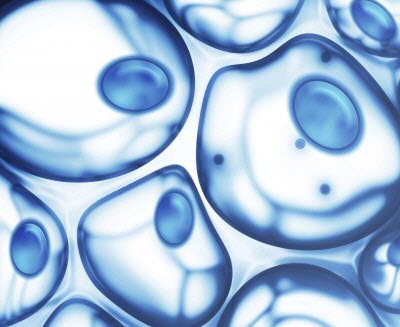Reprogramming Human Cells a Breakthrough in Disease Treatment
The research also means that the growing of whole organs from human cells in the lab may well be fast tracked
 Image courtesy of Monash UniversityNew research led by a team of scientists from Monash University and the University of Bristol has resulted in the development of a blueprint that will eventually allow clinicians to routinely turn cells in the human body into tissues needed to treat disease. Applications include turning skin cells into cells of the arteries and veins to treat people with diabetes or heart disease. The study, published today (Jan. 19) in Nature Genetics, overcomes what has been one of the main barriers to regenerative medicine therapies–the pace in which we learn how to make different cell types.
Image courtesy of Monash UniversityNew research led by a team of scientists from Monash University and the University of Bristol has resulted in the development of a blueprint that will eventually allow clinicians to routinely turn cells in the human body into tissues needed to treat disease. Applications include turning skin cells into cells of the arteries and veins to treat people with diabetes or heart disease. The study, published today (Jan. 19) in Nature Genetics, overcomes what has been one of the main barriers to regenerative medicine therapies–the pace in which we learn how to make different cell types.
The research by scientists at Monash University in Melbourne (Australia), the University of Bristol (United Kingdom), Duke-NUS (Singapore) and Riken (Japan) also means that the growing of whole organs from human cells in the lab may well be fast tracked.
Associate Professor Jose Polo, from Monash University, is a stem cell biologist, who at a conference in Canada last year, began talking with Dr. Owen Rackham, a computational scientist, working in the group of Professor Julian Gough, from the University of Bristol. They rapidly realized that both groups had the same goal–but from different perspectives: what makes a particular cell type that cell type? What makes a cardiac muscle cell different from a cell of the pancreas? What determines this? How can we change any cell into any other cell type?
In 2007, human iPS cells were discovered. Made from skin, iPs cells appear to have the characteristics of embryonic stem cells meaning they can theoretically be turned into nerve, heart, liver or other types of cells and transplanted to repair damaged organs. The discovery electrified scientists because the cells seemed to have two big advantages over embryonic stem cells: they were not controversial, because their creation did not entail the destruction of human embryos and, since the stem cells could be made from a particular patient’s skin cells, they could be used to make tissues that would not be rejected by that patient’s immune system.
The discovery of iPS cells boosted the “reprogramming field”, or the science of converting one type of cell into another cell type. However, according to Associate Professor Polo, the field has been moving slowly, essentially because while it is known that certain factors can turn a cell of the skin into iPS cells or a few other cells–it could take years of testing to determine which cocktail of factors is needed for producing other cell types from iPs cells.
At the University of Bristol, Professor Julian Gough and Dr Owen Rackham (now at Duke NUS Graduate Medical School in Singapore), had been developing a predictive model (called Mogrify) for converting any cell type into other cell types. At the same time at Monash University, Associate Professor Jose Polo and PhD student Jaber Firas had been working on the mechanism that govern such cell conversions. “It was a match made in heaven,” Associate Professor Polo said. Working together as a big group scattered across the UK, Singapore and Australia, they were able test the algorithm in cell cultures and further improve it to create a predictive tool that they believe will shorten the time to discover how to create any cell type from years to months.
“Using Mogrify, we found that it took us as little as four months to map the fate of a fibroblast cell turning into an endothelial cell, a process which under the current “trial and error” model of putting in different factors–could take several years,” Associate Professor Polo said.
Mogrify will allow scientists to select the type of cell they have, the type of cell they want to turn it into “and Mogrify suggests the factors needed to make that happen, in much the same way you put departure and arrival information into an airline booking. It’s as simple as that,” he said.
Associate Professor Polo predicts that “in the future Mogrify will allow clinicians to treat diseases like diabetes and Parkinson’s or even other conditions such as severe burns by making new skin in the patient.”
